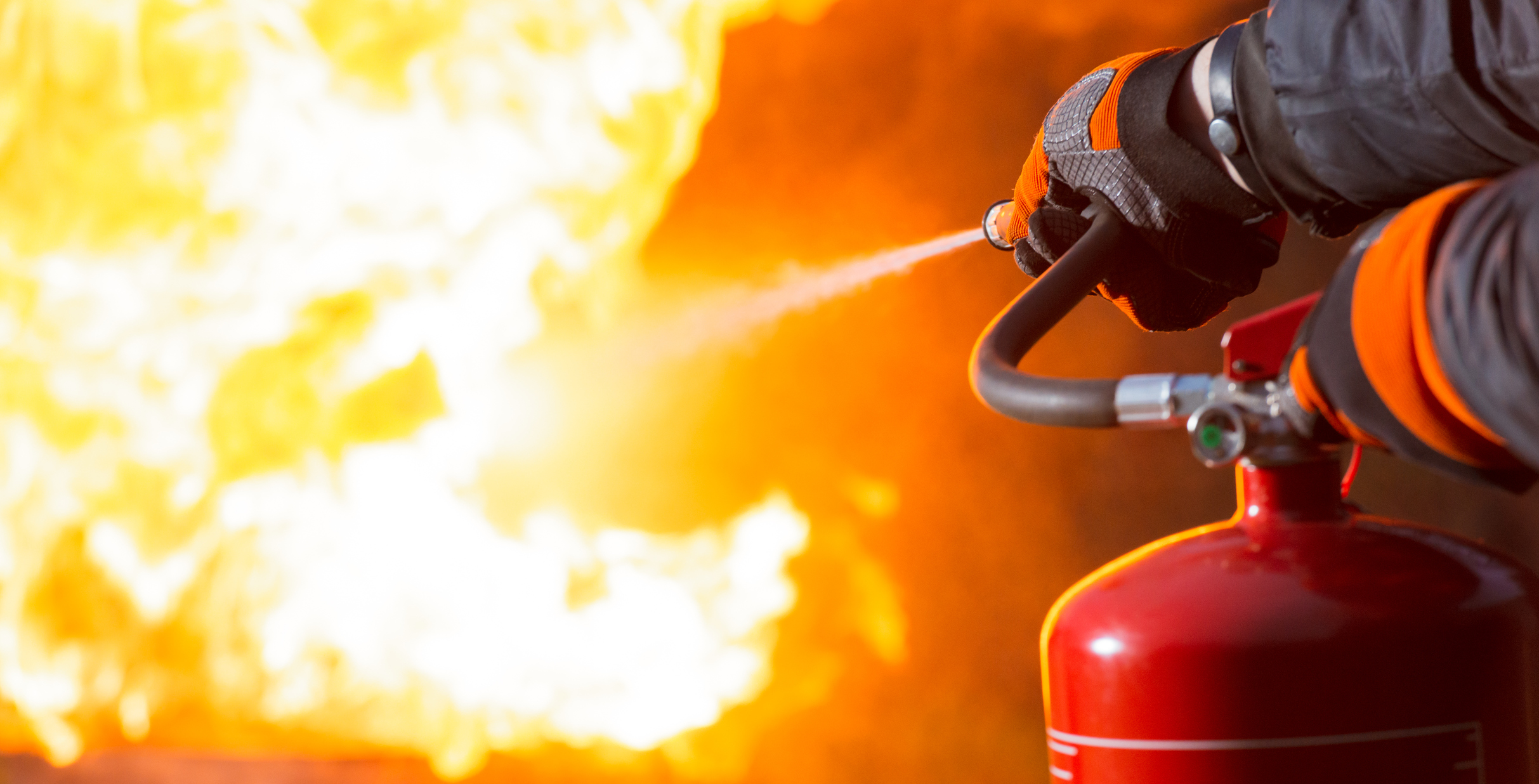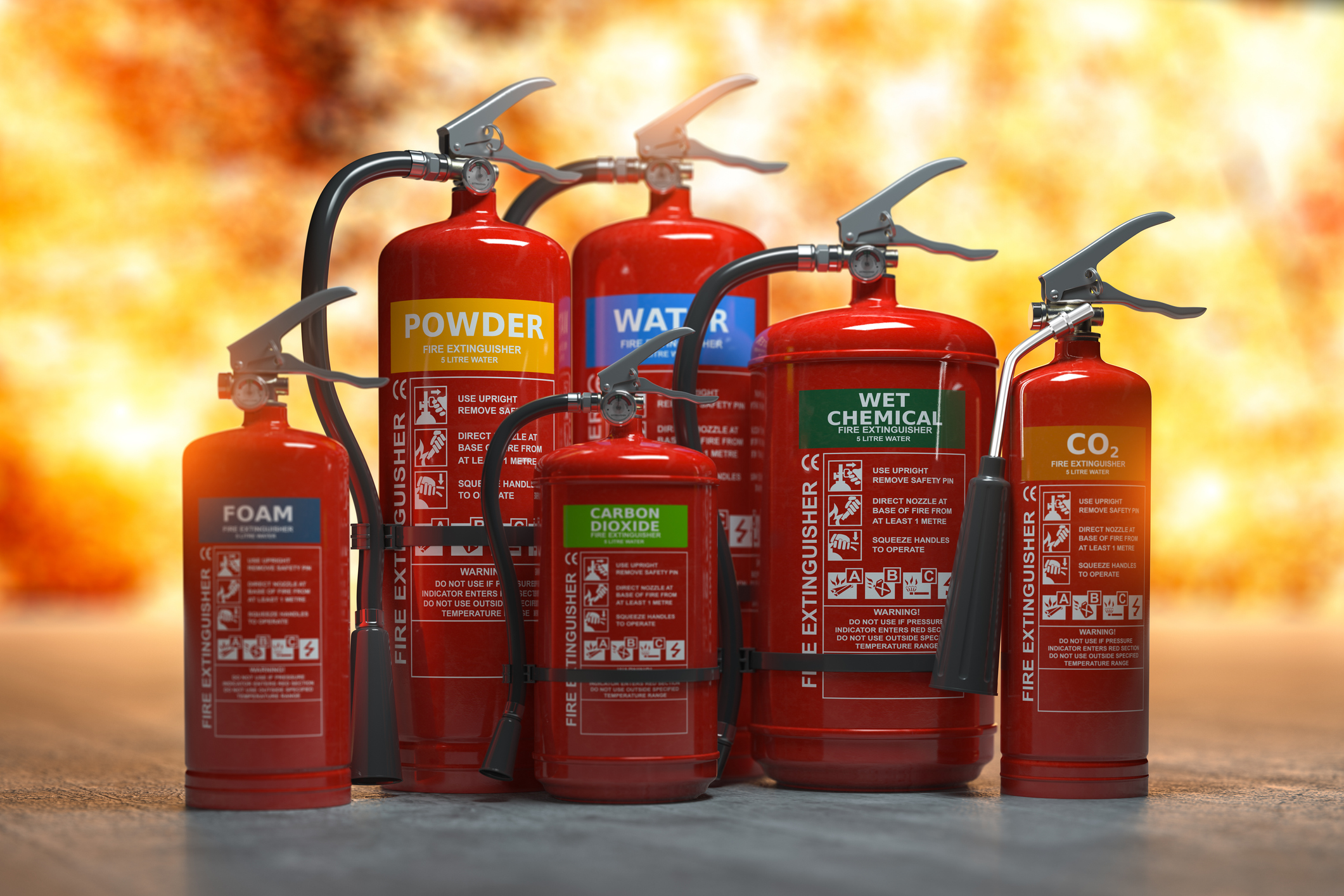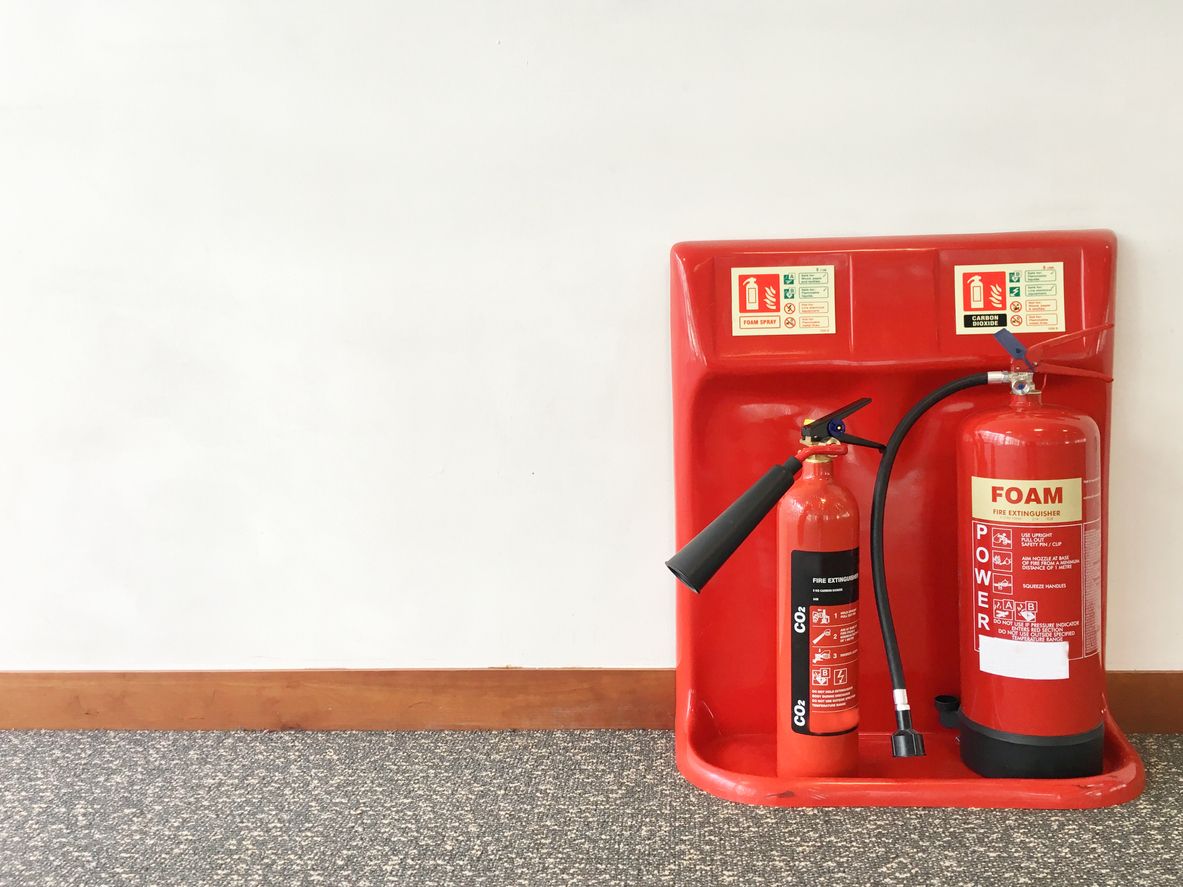
Fire Extinguisher Servicing: How to & How Often
Fire extinguishers play a vital role in the event of a fire in commercial properties – it’s critical that they’re properly maintained and serviced to ensure they’re fit for purpose. It’s the duty of the responsible person within a business to arrange the regular servicing and maintenance of fire extinguishers, so that in the unfortunate event of a fire, they can be used without fault.
The Importance of Having Properly Maintained Fire Extinguishers
Fire extinguishers are an important part of any fire safety plan, and should be kept in good working order at all times. If a fire does break out, you want to know that your extinguishers will work when you need them – and regular servicing is the best way to ensure this.
Servicing a fire extinguisher involves checking it for damage, testing the pressure gauge, cleaning and lubricating it where necessary, and refilling it with the correct amount of extinguishing agent. A professional will also be able to advise you on whether any parts of your extinguisher need replacing, and can recommend specific intervals for servicing depending on the type of fire extinguisher involved.
How Often Should Fire Extinguishers Be Serviced?
There are three types of fire extinguisher servicing: monthly regular visual inspections, yearly basic services, and extended services to be performed once every five years:
Regular Visual Inspections
Visual inspections should be done on a monthly basis for water, foam, CO2, wet chemical and powder fire extinguishers. These quick and easy-to-do monthly checks that identify any potential issues with the extinguisher can help you save lives, and protect your property.
A complete monthly fire extinguisher inspection consists of a brief visual examination of the extinguisher, its pressure gauge, and headcap pin and seal. This is to ensure that any damage, loss of pressure, or tampering has been found. Finally, you should verify that the extinguisher is in its proper location on a wall bracket or extinguisher stand, as well as that the usage instructions are clearly visible.
Basic Service
You must have your fire extinguishers serviced at least once a year – this is known as a “basic service” and must be carried out in compliance with BS 5036-6. This task is best left to a professional – like ourselves here at Britannia Fire & Security – who have access to the appropriate tools, training, and experience.
The steps required to service a particular type of extinguisher will be determined by the type and age of the extinguisher. The headcap seal is generally replaced, the headcap safety pin is verified for proper operation, the pressure gauge is checked, and any O rings in the valve-hose junction or horn are changed. After that, the technician performs a visual inspection of the extinguisher’s status and gives instructions on how to use it safely.
Extended Service
Water, foam, powder, and wet chemical extinguishers require routine servicing every 5 years which is best performed by a trained and certified expert with the skills to service an extinguisher correctly, safely, and reliably.
The extended service once again goes through a thorough and in-depth evaluation of the fundamental service’s components. The extinguisher is then discharged, with particular attention paid to the pattern, distance, and duration of the discharged fire suppressant to ensure it’s within specification.
The valves on the extinguisher are tested and refurbished. The inside is examined to verify that the lining is intact and no corrosion exists. The headcap O ring is replaced, as well as the headcap assembly, to ensure that the valve will seal properly. The extinguisher is then re-filled and pressured to ensure leak-free performance before being checked for leaks.
CO2 extinguishers are high-pressure cylinders that are not comparable to other fire extinguishers in terms of pressure. Because of this, they must be serviced differently and have slightly different rules than other fire extinguishers. Every ten years, a CO2 extinguisher needs an overhaul, which is when it’s serviced.
The primary valve is replaced with a new one, and the extinguisher body is hydrostatically pressure tested to ensure it isn’t stretched, cracked or bulging. This includes having the extinguisher taken to an approved service facility.
Where to Get Your Fire Extinguishers Serviced
Now that we’ve established how often fire extinguishers are required to be serviced, and the different steps that go into the maintenance process – it’s important to know where you can get them professionally serviced.
Here at Britannia Fire & Security, we’re a professional fire extinguisher servicing company that provides a range of services to ensure your extinguishers are up to date and compliant with BS 5036 – part six. We have the skills, experience, and tools necessary to service any type of fire extinguisher in a safe and reliable manner.
If you’d like more information on our services, please don’t hesitate to get in touch with a member of our friendly team today. We’d be happy to answer any questions you might have.




